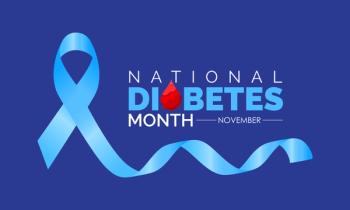
- February 2022
- Volume 88
- Issue 2
Medication Adherence Issues Affect CVD Management
Lack of immediate results, cultural barriers, and high costs lead many to gamble with their cardiovascular health, study results show.
Cardiovascular ardiovascular disease (CVD) encompasses several disorders of the blood vessels and heart, including cerebrovascular, congenital heart, coronary heart, peripheral arterial, and rheumatic heart conditions, as well as embolism disorders, such as deep vein thrombosis and pulmonary embolism.1 All of these conditions cause concern, as a diseased blood vessel can develop blood clots, which can lead to a complete blockage of the vessel and even a heart attack or stroke. Buildup of the fatty deposits in blood vessels can happen over time and cause a heart attack or stroke without warning. Weak blood vessels can lead to bleeding, which can also cause stroke.1
CVD-related diseases are the leading cause of death globally and in the United States. Approximately 17.9 million individuals died of various types of CVD in 2019, representing approximately 32% of all deaths worldwide. Eighty-five percent of these deaths were directly related to a heart attack or stroke. Approximately three-fourths of CVDs happen in low- or middle-income countries, which may lack health care resources.1
Some ways to address the impact of CVD is to pay close attention to the causes, risk factors, and treatment options. Risk factors include overconsumption of alcohol, physical inactivity, and smoking. Such behavior can cause elevated blood glucose levels, blood pressure, and lipids, as well as obesity.1
One of the most important considerations is nonadherence to medications that treat CVD. At least 60% of patients with various types of CVD report nonadherence to their medications.2 Nonadherence is a particular problem after discharge from the hospital, when a patient is most at risk, accounting for approximately one-fourth of patients who are nonadherent to their medications on a daily basis. Meanwhile, approximately half of patients discontinue CVD medications, such as statins, within 6 to 12 months of having them prescribed.2
Another problem is patients who never fill their prescriptions after a cardiovascular event or hospitalization, which leads to an 80% higher chance of death within 120 days.2 Although pharmacists may be frustrated by patients who do not adhere to or even fill their prescriptions for CVD conditions, many factors are at work. These can include communication barriers, such as low functional literacy, mental illness, and not speaking English, and socioeconomic barriers, including lack of health coverage, medication cost concerns, and unemployment.
Some patients may lack the motivation to adhere to their medications because they do not understand the benefits or the disease or they are afraid of potential adverse effects or toxicity.2
Pharmacists must also be aware of cultural barriers, which may get in the way of adherence.
Effective communication skills, such as explaining how medications work and the importance of adherence, are key.2
Study results have shown that patients are less likely to take medications that do not show immediate impact on their health, such as lipid-lowering drugs for the prevention of heart attacks. Patients are usually more adherent when taking medications that provide quick results, such as analgesics, antibiotics, or antiemetics. Most medications for CVD prevention and treatment are maintenance or preventive drugs, which typically do not provide immediate results. Counseling patients about adhering to these medications, even if they do not see an impact, is a crucial role for pharmacists.2
The 2 measures for medication adherence are pooled from prescription claims data: the medication possession ratio and the proportion of days covered (PDC). A PDC greater than 80% produces the most clinical benefit to patients. To get to this level of adherence, there must be effective communication between the patient and pharmacist to ensure there is a clear understanding of why and how to take their medications.3
Automatic home medication dispensers, fixed-dose combination drugs, mobile health applications, and patient incentives can improve medication adherence for patients who have CVD or are at risk of having the disease. When cultural barriers exist, pharmacists may need to try several of these solutions. Tailoring the medication education to specific patients is critical and may include advising them about taking combination drugs with fewer tablets and providing frequent reminders. All these tactics can improve medication adherence, which paves the way for better clinical outcomes, preventing hospitalizations or visits to emergency departments.3
Finally, the importance of medication costs cannot be overstated. One in 8 patients with CVD reported not adhering to their medications because of the cost.4 Pharmacists should do what they can to lower or relieve the costs of CVD medication to help patients as well as the health care system overall.4
Early disease and medication management can not only improve the quality of life for patients but also help strengthen communities, states, and the country by lowering health costs for everyone.
Saro Arakelians, PharmD, is vice president of pharmacy operations, population health management, and chronic health conditions in the Los Angeles, California, area.
References
1. Cardiovascular diseases (CVDs). World Health Organization. June 11, 2021. Accessed January 26, 2022. https://www.who.int/news-room/fact-sheets/ detail/cardiovascular-diseases-(cvds)
2. Baroletti S, Dell’Orfano H. Medication adherence in cardiovascular disease. Circulation. 2010;121(12):1455-1458. doi:10.1161/CIRCULATIONAHA.109.904003
3. Ogungbe O, Dennison Himmelfarb CR, Commodore-Mensah Y. Improving medication adherence in cardiovascular disease prevention: what’s new? J Cardiovasc Nurs. 2020;35(1):6-10. doi:10.1097/JCN.0000000000000645
4. Khera R, Valero-Elizondo J, Das SR, et al. Cost-related medication nonadherence in adults with atherosclerotic cardiovascular disease in the United States, 2013 to 2017. Circulation. 2019;140(25):2067-2075. doi:10.1161/ CIRCULATIONAHA.119.041974
Articles in this issue
over 3 years ago
OTC Cases: February 2022over 3 years ago
Interactive Case Studies: February 2022over 3 years ago
Be Aware of Age-Related Mix-Ups of COVID-19 Vaccinesover 3 years ago
Korsuva From Cara Therapeutics and Vifor Pharmaover 3 years ago
OTC Product News: February 2022over 3 years ago
Minnesota Fights Back Against Rising Insulin Costsover 3 years ago
Pharmacist’s Role Is Key in Counseling Patientsover 3 years ago
Point-of-Care Drug Information Resources Are Criticalover 3 years ago
Generic Product News: February 2022Newsletter
Stay informed on drug updates, treatment guidelines, and pharmacy practice trends—subscribe to Pharmacy Times for weekly clinical insights.


















































































































































































































